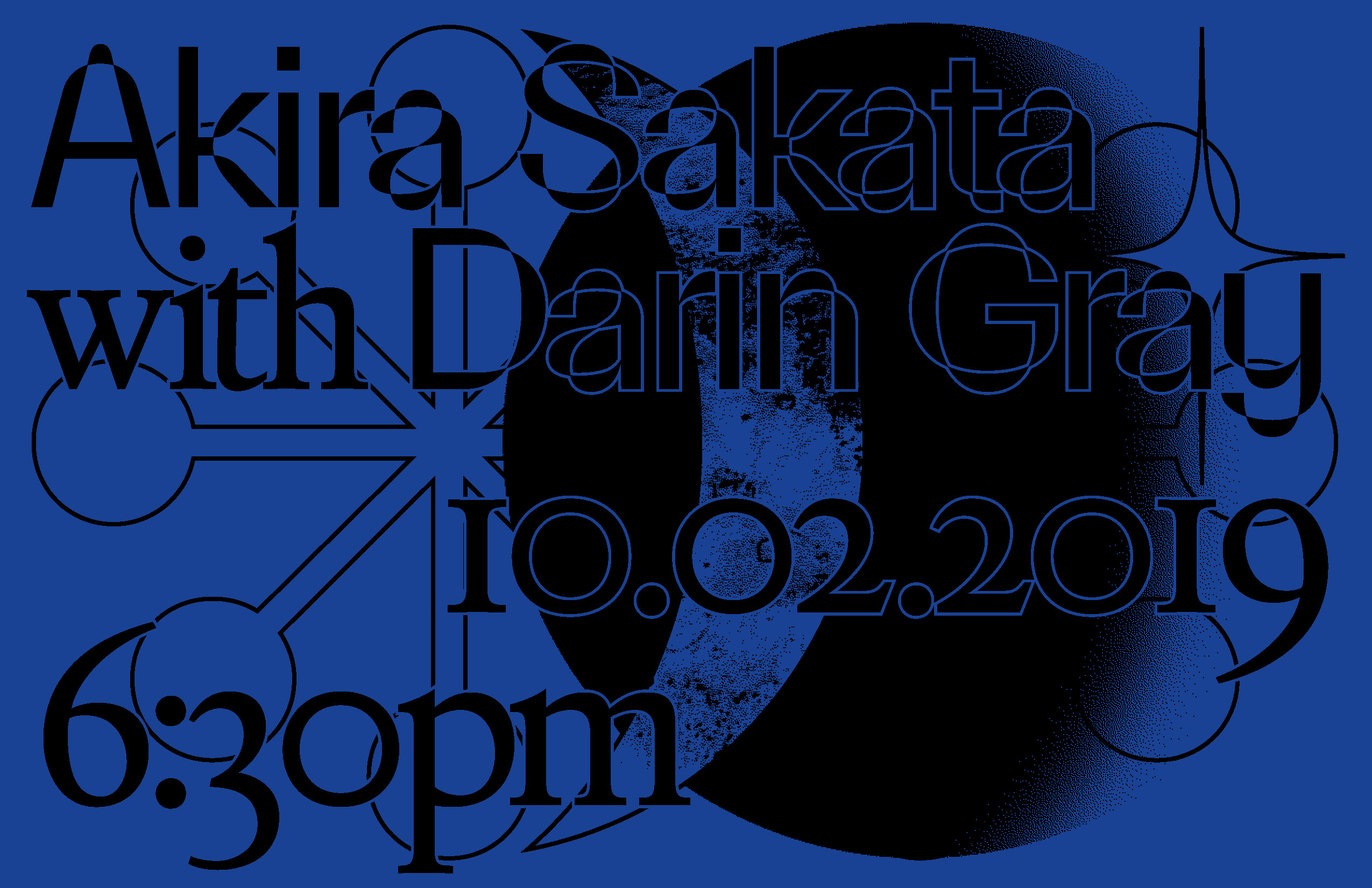Akira Sakata with Darin Gray

James Cohan Gallery
2nd Fl
New York, NY 10013
Akira Sakata (b. 1945) is a veteran Japanese free jazz alto saxophonist as well as a marine biologist, television and film actor, and writer. Sakata entered the international stage as a member of the explosive Yamashita Yosuke Trio from 1972 to 1979 before striking out on his own as a leader and creating a heterogeneous body of work that has touched on electronic music, pop, and Japanese folk, including sessions for Enja Records and three LPs for the now coveted Better Days label. He has lent the swagger of his blistering reed phrasing to collaborations with the likes of Last Exit, Jimmy Lyons, Hamid Drake, Keiji Haino, Peter Brötzmann, Hijokaidan, Urban Sax, and Charles Hayward, but his performances can also distinguished by his idiosyncratic use of his voice. 2001’s Fishermans.com, Sakata’s ode to folksongs of the sea, finds him alternating between sultry alto lines and possessed vocal ululation, its dark mutant funk featuring no less than legendary fusion-era Miles Davis guitarist Pete Cosey in his first recorded session since his 1983 contribution to Herbie Hancock’s Future Shock. Continuing the immaculate pedigree of his collaborations, Sakata in 2005 began performing with Jim O’Rourke, drummer Chris Corsano, and bassist Darin Gray, marking a fruitful return to his incendiary free jazz roots across several albums. Gray is best known as Jim O’Rourke’s go-to bassist of 20 years, having played on the latter’s beguiling classics Eureka and Insignificance. He was also a fixture of the vital St. Louis and Chicago noise rock scenes of the ‘90s as a member of Dazzling Killmen, Brise-Glace, and Yona-Kit, is a consummate prepared bass guitarist, and has played with Will Oldham, Daniel Johnston, Loren Connors, Ikue Mori, Merzbow, Rafael Toral, Konono No. 1, and Nels Cline. Gray has also composed for film, theater, dance, and radio and has released five albums as half of On Fillmore.
Blank Forms has curated a program of music and poetry as part of Josiah McElheny’s new solo show, Observations at Night. McElheny’s sonic sculpture, “Moon Mirror,” will function as both an acoustic reflector and an open stage-like platform for performances, as part of an exhibition of optically dynamic paintings and sculptures inspired by cosmic revolutionary figures like Joe McPhee and Sun Ra Arkestra singer June Tyson. Tyson’s optimistic communication of the potential for world-building beyond the painful alienation of presiding earthly visions serves as the focal point for the series’ interrogation of how music and poetry might illuminate new pathways of resistance to our troubled political climate. An international assembly of artists from a diverse spectrum of creative improvising idioms have been selected to use McElheny’s parabolic structure as a catalyst for explorations of both acoustic feedback and social interaction between performers and audiences from heterogeneous cultural spheres. Featuring performers pulling inspiration from black American free jazz as well as experimental music, deep listening, and folk traditions of Korean, Japanese, Iraqi, Indonesian, and Persian music, the surreal convergence of mysteries of light and sound proposes that we might today not only pass through what can feel like a dream or nightmare state but find something here, visible or audible in the twilight that can lead into a cosmic future.
James Cohan Gallery is located two blocks away from the Canal St 46ACEJZ stop. There will be a ramp set up for each Observations at Night performance, making the gallery fully wheelchair accessible. Please write at least three days before the event and we will make every effort to accommodate you.